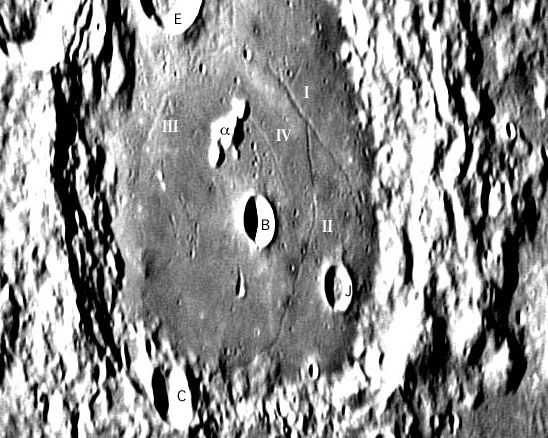October 6, 2004
Cleomedes Unveiled
Image Credit: Bruno Daversin |
|
Cleomedes Unveiled Spaceship Daversin has just returned from another Moon mission with the best images in existence of Cleomedes crater. This view shows many features unknown to lunar science. Congratulations, Bruno! This is the clearest view ever of the two known rilles that meet east of the 550 m high off-center peak, Alpha. On a highly stretched version of the image (mouseover) it is clear that there are additional fainter rilles and spurs- I have given them Roman numerals starting with the previously designated Roman numeral I. Number III conceivable is a continuation of number I, but it seems more convoluted in plan, whereas I is more linear. Number III appears to extend north out of the image. Rille number IV is a nearly linear one, that I estimate to be about one km wide. The really remarkable thing about this image is the number of previously unknown dark halo craters it reveals. Three occur along or near rille III and at least five others are on the floor, mostly on the east side of the floor. The largest dark halo crater, between craters J and B (diameter 10.7 km) is about 1.7 km in diameter and its halo is 4 km wide. Because of their association with rilles these are likely to be explosive volcanic craters (like those in Alphonsus) rather than impact craters that have excavated underlying dark material (e.g. Copernicus H). Interestingly, Cleomedes is the 19th largest pyroclastic deposit on the Moon, having an area of 1089 km2. This is determined from Clementine images which reveal the dark halos but not the details seen here. I suspect the two V-shaped hills seen in the southwest corner of the floor are volcanic cones that were also sources of a pyroclastic deposit. Technical Details: Related Links: Yesterday's LPOD: Finding Your Way on a Very Young Moon Tomorrow's LPOD: Diamondback Rille |
|
Author & Editor: |
COMMENTS?
Register, Log in, and join in the comments.





